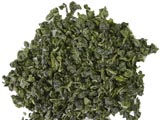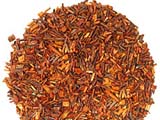| |
Home > Experience > Tea |
|
|
 |
|
|
|
 Green Tea. Green Tea.
Green tea is often lauded for the many amazing health benefits that it touts.
However, in Asia, the birthplace of tea, green tea is widely enjoyed not only
for medicinal effects, but for the many dimensions of flavor that can be
experienced through the different varieties. In China, there are nearly as many
varieties of green tea as there are towns.
|
|
|
|
| |
|
|
|
 |
|
|
|
 Oolong Tea. Oolong Tea.
Taiwan has a perfect climate for oolong tea. It is partially oxidized before it is fired, so color is somewhere between green and black. The tea grows on small plantations that are not open to the public because the growers are secretive about the production. |
|
|
|
| |
|
|
|
 |
|
|
|
 Black Tea. Black Tea.
Though known to most of the world as “black tea,” the Chinese call it “red tea” due to its characteristic reddish-brown color. Black tea is the most common type of tea worldwide. It has a broad range of flavors, but is typically heartier and more assertive than green or oolong teas. It is made by fully fermenting the harvested leaves (for several hours) before the heating or drying processes occur. |
|
|
|
| |
|
|
|
 |
|
|
|
 White Tea. White Tea.
White tea is the most subtle of all the varieties of tea, using only the finest
tea leaves from each bush with a minimal amount of processing. Considered by
most connoisseurs to be the apotheosis of tea, white tea has yet to make a
significant impact on Western culture. This will soon change, with new studies
showing that white tea is 10% more effective in improving immune health than its
green cousin.
|
|
|
|
| |
|
|
|
 |
|
|
|
 Rooibos. Rooibos.
Rooibos tea is grown exclusively in the Cedarburg region of South Africa, where
it has been growing wild for centuries. Also known as Red Tea, rooibos tea
gained popularity during WWII when tea supplies from Asia forced drinkers to
find an alternative. With the many amazing health benefits surfacing and many
flavors available, rooibos tea has far surpassed its role as an alternative
beverage.
|
|
|
|
| |
|
|







